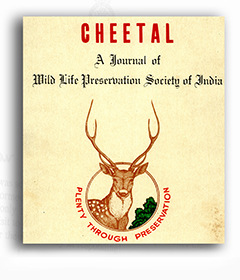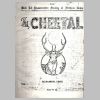Wildlife Preservation Society of India is one of the oldest conservation societies in India with a rich legacy. Founded by the Maharaja of Nabha as the ‘Wildlife Preservation Society of North India’ in April 1958, the society expanded and became ‘Wildlife Preservation Society of India’ in 1960. The society had its own journal called Cheetal: Journal of The Wildlife Preservation Society of India (WPSI). In the initial decades after its formation, WPSI and its journal Cheetal was patronized by most of the leading wildlife experts in India of the time hailing from a variety of backgrounds, right from princely scions to biologists to naturalists to Indian Forest Service officers. They not only assiduously built up the society and oversaw expansion of its work but also shared their works and writings through Cheetal. These writings, even decades after they first appeared in the journal, are still heavily referenced in many contemporary natural history research subjects. The society right from its inception has deeply involved wildlife and nature lovers from all walks of life as its notable members who contributed extensively to Cheetal. The society had the privilege of having V.V. Giri and Fakhruddin Ali Ahmed, former Presidents of India as its Chief Patrons in 1969 & 1975 respectively. Jawaharlal Nehru too occasionally contributed to the journal. The journal, thus, became one of the richest and most valuable repositories of natural history writing to emerge out of post-independence India. Each issue of the journal almost always had 1-2 articles in Hindi to reach out to the non-English reading audience interested in nature writing and conservation.
About the Collection: A set of 50 volumes of Cheetal (from 1958 to 2012) digitized by the Archives of Contemporary India are available for scholarly consultation. Each issue of the journal contains a wide range of articles, research papers, surveys, proposals, notes, etc. by almost every legendary wildlife enthusiast, old-school field officers and reputed wildlife biologists. These relate to themes right from hunting anecdotes, wildlife conservation, techniques in wildlife management, status reports on wildlife and ornithology making it an invaluable source of primary research for anyone interested in wildlife conservation in post-independent India as well as early wildlife biology in India. (Catalogue available)




